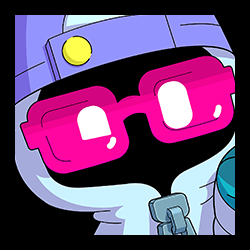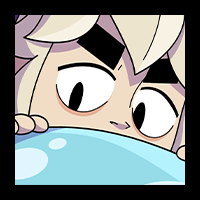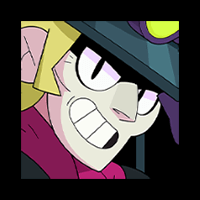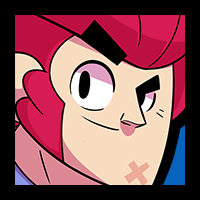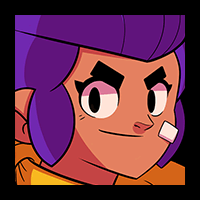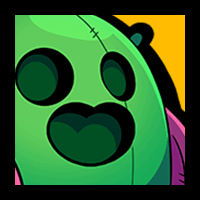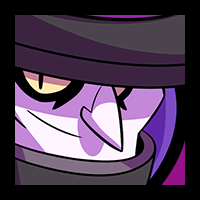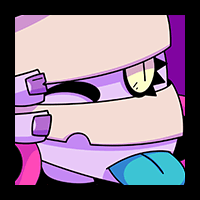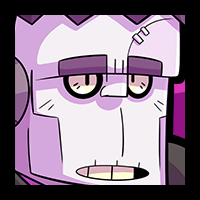Shade has swiftly become one of Brawl Stars' most enigmatic characters, igniting a plethora of theories among the community. As the latest member of the Ghost Station Trio, Shade's origins are deeply intertwined with the dark history of Star Park and the tragic fates of fellow brawlers like Gus and Chuck. But what exactly is Shade, and how does he fit into the intricate lore of Brawl Stars?
To truly grasp Shade’s backstory, we need to delve into Star Park’s sinister experiments. Star Park isn't just a typical amusement park; it's a site of horrific scientific endeavors that have left lasting scars on its inhabitants. Gus, one of the original members of the Ghost Station Trio, met a tragic end after falling victim to these twisted experiments, transforming him into a ghost. Chuck, another key figure, has mysterious ties to Star Park's dark past, hinting at connections to delusional psychosis and other mental strains induced by the park's environment.
Shade, described in-game as a pile of sentient clothes, might seem simple at first glance. However, considering the complexity of other brawlers' origins—like the cactus brought to life by radioactive gems or the faceless Spike created through gruesome self-mutilation—Shade's description likely masks a deeper, more intricate backstory. It’s plausible that Shade isn’t just random clothing but garments specifically belonging to Gus, linking him directly to Gus’s tragic narrative.
One compelling theory suggests that Shade is a manifestation of Gus’s fragmented psyche. Gus has always exhibited a vivid imagination, with his balloon companion and his childlike creativity setting him apart from other brawlers. In the face of the trauma he endured at Star Park—abandonment, isolation, and exposure to hazardous experiments—Shade could represent Gus’s way of coping. Rather than being a fully living entity, Shade might be a partial consciousness, a coping mechanism birthed from Gus's emotional and psychological distress.
This idea parallels narratives like that of Coraline, where characters imprint life onto inanimate objects as a way to deal with their fears and loneliness. Similarly, Shade could be nothing more than a pile of Gus’s clothes in reality, but for Gus, Shade is a sentient being providing much-needed companionship. This perspective not only deepens Shade’s character but also reinforces the overarching theme of Star Park’s impact on its victims.
The symbolism doesn't stop at Shade's origin. Consider the single glove Shade wears. While it might seem odd at first, this glove could represent an injured arm or hand, echoing Gus’s own physical trauma. Gus's severe leg injury and paralyzed limbs are key elements of his brokenness, both physically and emotionally. Shade’s design, with missing legs and a single glove, mirrors Gus’s fractures, representing the broken identities forced upon them by Star Park's experiments.
Moreover, the straightjacket and chains that Shade is often depicted with add another layer of symbolism. These elements likely signify confinement and the struggle against the physical and spiritual shackles imposed by Star Park. The key, another recurring symbol in Shade's design, could represent the only means of escape—death. This suggests that Shade’s existence is a direct consequence of the trauma inflicted by Star Park, serving as a reminder of the dark legacy the park leaves behind.
But Shade’s connection to Gus goes even deeper. Observing their character models, particularly the hat and color scheme, it's evident that Shade is not an entirely new entity but rather a reflection of Gus’s spirit. Shade embodies Gus’s innocence and longing for connection, starkly contrasting with the violence and fear that permeate Star Park. This duality highlights the internal struggle within Gus, with Shade representing the part of him that yearns for love and kindness amidst chaos.
The pink sunglasses Shade wears serve as a metaphor for Gus’s enduring innocence. Pink often symbolizes purity and playfulness, attributes that Gus clings to despite his harrowing experiences. These sunglasses could signify Gus’s inner light, a remnant of his childlike wonder that persists even as he haunts the Ghost Station. This visual element reinforces the theme of innocence overshadowed by trauma, a central narrative thread in Brawl Stars’ lore.
Moreover, Shade’s interactions and animations speak volumes about his character. His attempts to hug the air and create sparkles of stars are not aggressive moves but expressions of a deep desire for connection. In a world dominated by conflict, Shade’s actions symbolize a yearning for peace and understanding, echoing the emotional wounds inflicted by Star Park. This behavior underscores Shade’s role as a symbol of brokenness and the lingering impact of trauma.
Considering all these elements, Shade is not just another brawler; he is a profound representation of the Ghost Station Trio's fractured histories. Each member of the trio—Gus, Chuck, and Shade—embodies different facets of the trauma inflicted by Star Park. Gus’s transformation into Shade highlights the psychological toll of their ordeals, adding depth to the narrative and enriching the game’s lore.
Furthermore, Shade's introduction as the final member of the Ghost Station Trio completes the tragic story arc, tying together the fates of the lost children of Star Park. This holistic approach to character development emphasizes the interconnectedness of their stories, making each brawler's journey more impactful. For players invested in the lore, Shade’s story offers a compelling glimpse into the darker side of Brawl Stars, where every brawler has a rich backstory shaped by adversity and resilience.
In conclusion, Shade is a multifaceted character whose existence is deeply rooted in the emotional and psychological ramifications of Star Park’s dark experiments. By embodying Gus’s fractured identity and longing for connection, Shade enriches the Brawl Stars universe with layers of narrative complexity. As players continue to explore the lore, Shade stands out as a poignant reminder of the lingering effects of trauma and the enduring spirit of those who seek solace amidst chaos.
